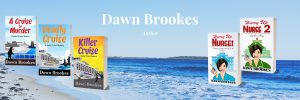Introduction
As a writer of murder mysteries I have had to make some decisions in relation to the ethical dilemmas of writing about crime and murder. Some authors go down the road of graphic violence and explicit detail while others steer clear, focusing on the mystery element rather than the crime itself.

Sometimes there appears to be an appetite in society for sensationalist gratuitous violence or sex, and scenes that shock within suspense fiction. This is often coupled with frequent use of strong language whether or not it fits the story. It’s almost expected. But do we always need a sledgehammer to break an egg?
Sensationalist Fiction
Sensationalist fiction is not new and emerged as a genre in the Victorian era. Murder was just one of the many scandalous topics addressed in books of the late 1800s (Rubery, 2011). The difference between then and now is that such literature produced an outcry when it was first introduced, whereas now there is a general hunger for more of the same. Why might this be?
Chandler (1950) argued that the classic genre of crime novels was too detached from reality due to the murders occurring off-screen. He was scathing of classic crime writers such as Dorothy L. Sayers, Agatha Christie and Arthur Conan-Doyle, arguing that their characters lacked depth. His opinion was that hard-boiled (at the time, American) crime portrayed the real world and crime writers should incorporate this. His point being that fiction is intended to be realistic.
I agree with Ainsworth (2014) who argues in her dissertation that Chandler missed the point that, although the murders are more subtle in classic crime, writers such as Sayers addressed real psychological issues. Shell shock being one of these (Sayers husband had been a sufferer post WWI).
Arthur Conan-Doyle also included the topic of nerves and trauma suffering in his work and there is none sharper or more adept than Agatha Christie at delving into the human psyche.

The Growth of Crime Fiction
Crime fiction grew in popularity from the mid 1970s but not everyone believes this is due to voyeurism. Some suggest it might be more of a way that people come to terms with their own mortality.
Or it could be that readers have become desensitised by graphic novels in the same way that news broadcasts no longer shock us. The more we are exposed to suffering, violence, swearing and graphic sex, often through the television screen and also through reading, the less shocking watching or reading it becomes. Perhaps that’s why there’s a trend towards the horrific.
Chandler would argue that its necessary for authors to portray the ‘real’ world and highlight the horrific and darker side of society through hard-boiled crime writing. It’s not either/or, it’s down to choice both as a reader and a writer. Crime novels are many and varied with many striking a balance between that which is gratuitous and that which is realistic.
The Cozy Audience
There are those who buck the trend towards the more graphic novels, and never more so than during the pandemic. Many people have found and do find the world shocking enough without subjecting themselves to hours of reading grim novels. It’s this audience that takes pleasure in the cleaner side of crime and lean towards classic crime novels alongside the popular trend of humorous cozy crime.

Sticking with Clean Crime
There is more to writing crime fiction than shock value, and there’s an audience for every type of writing, including clean crime. I have made a deliberate and personal choice to focus on plot and psychology rather than feeding a shockaholic frenzy. Having recently published a crime novel grittier than a cozy mystery, but emphasising the investigation and the people rather than the forensic detail, I believe it can be done. I hope you like my latest offering.

What about you?


